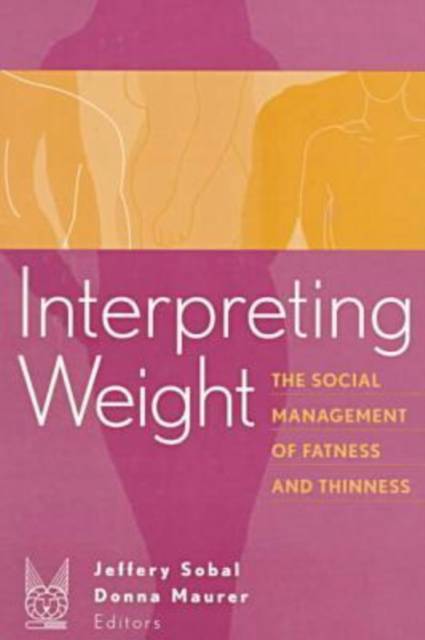
- Afhalen na 1 uur in een winkel met voorraad
- Gratis thuislevering in België vanaf € 30
- Ruim aanbod met 7 miljoen producten
- Afhalen na 1 uur in een winkel met voorraad
- Gratis thuislevering in België vanaf € 30
- Ruim aanbod met 7 miljoen producten
Zoeken
€ 89,95
+ 179 punten
Uitvoering
Omschrijving
What is "too fat?" "Too thin"? Interpretations of body weight vary widely across and within cultures. Meeting weight expectations is a major concern for many people because failing to do so may incur dire social consequences, such as difficulty in finding a romantic partner or even in locating adequate employment. Without these social and cultural pressures, body weight would be only a health issue. While socially constructed standards of body weight may seem immutable, they are continuously re-created through social interactions that perpetuate or transform expectations about fatness and thinness.Understanding social constructions of body weight requires insight regarding how people develop and use constructions in their daily lives. While structural conditions and cultural environments make important contributions to weight constructions, the chapters in this book focus on the social processes in which people engage while they interpret, negotiate, resist, and transform cultural definitions and expectations. As such, most of the chapters in this volume borrow from and contribute to a symbolic interactionist perspective.Written by sociologists, psychologists, and nutritionists, all of the chapters in Interpreting Weight focus on how people construct fatness and thinness. The contributors examine different strategies used to interpret body weight, such as negotiating weight identities, reinterpreting weight, and becoming involved in weight-related organizations. Together, these chapters emphasize the many ways that people actively define, construct, and enact their fatness and thinness in a variety of settings and situations.
Specificaties
Betrokkenen
- Auteur(s):
- Uitgeverij:
Inhoud
- Aantal bladzijden:
- 275
- Taal:
- Engels
- Reeks:
Eigenschappen
- Productcode (EAN):
- 9780202305783
- Verschijningsdatum:
- 31/10/1999
- Uitvoering:
- Paperback
- Formaat:
- Trade paperback (VS)
- Afmetingen:
- 154 mm x 227 mm
- Gewicht:
- 385 g

Alleen bij Standaard Boekhandel
+ 179 punten op je klantenkaart van Standaard Boekhandel
Beoordelingen
We publiceren alleen reviews die voldoen aan de voorwaarden voor reviews. Bekijk onze voorwaarden voor reviews.











